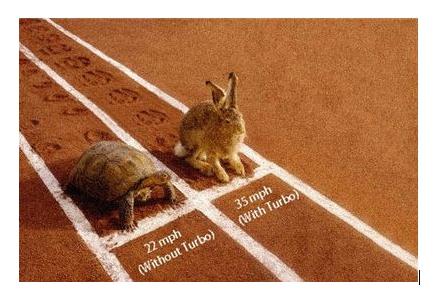In June 2014, REN21 (21st Century Renewable Energy Policy Network) released the "2014 Global Renewable Energy Status Report", which confirmed the fact that in 2013, the global solar photovoltaic installed capacity (39 GW) exceeded wind power for the first time. (35 GW). When photovoltaic, the unhurried tortoise, finally surpasses the long-term leader of the wind power little white rabbit, what does it mean in the arena of global renewable energy development, joy or worry?

There is no doubt that the accelerated development of photovoltaics, which is regarded as a clean, low-carbon energy source, should be said to be a good thing, and China has contributed greatly. In 2013, 39 GW of newly installed photovoltaic capacity was added, of which 12.9 GW (33%) came from China, followed by Japan (6.9 GW), the United States (4.8 GW), Germany (3.3 GW), the United Kingdom ( 1.5 GW). Of the 35 GW of newly installed wind power capacity in 2013, more than 16 GW came from China (45%), followed by Germany (3 GW), the United Kingdom (1.9 GW), and India (1.7 GW) , the United States (1.1 GW).
However, the new installed capacity of photovoltaics exceeds that of wind power, not because its cost has been reduced to a level lower than that of wind power.
The Levelized Cost of Electricity (LCOE) of various renewable energy sources in Germany released by the Fraunhofer Institute for Solar Energy Systems in November 2013. Among them, the LCOE range of centralized public photovoltaic power plants (1000-1200 hours of operation per year) is 0.078-0.142 euros/kWh, while the LCOE range of onshore wind power (1300-2700 hours of annual operation) is 0.045-0.107 euros/kWh. The cost of photovoltaics is about 40% higher than that of wind power. The LCOE range for hard coal power plants (5500-6500 operating hours per year) is 0.063-0.080 EUR/kWh. In other words, the cost of wind power is close to that of coal power.
The U.S. Energy Information Administration estimates the levelized cost of wind power and photovoltaics that will be put into operation by 2019 by considering factors such as investment cost, installed capacity utilization factor, maintenance cost, and power transmission cost. In 2012 dollar fixed prices, the LCOE range for PV is $0.1014-$0.2009/kWh ($0.1300/kWh on average); while the LCOE range for onshore wind power is $0.0713-$0.0903/kWh ($0.0803/kWh on average) Time). As for conventional coal power (without carbon capture and storage facilities), its LCOE range is $0.0870-0.1144/kWh (average $0.0956/kWh).
Obviously, wind power is more economical than photovoltaics. Therefore, before 2013, it should be a normal phenomenon that the development of wind power is significantly faster than that of photovoltaic every year in the world, and the new trend of newly installed photovoltaic capacity exceeding that of wind power in 2013 should cause people to think and even be alert.
In 2013, the newly installed wind power capacity was 35 GW, which was significantly slower than that in 2012 (45 GW was added that year). The reason is that in the context of the continuous decline of wind power costs, governments in many countries have reconsidered the preferential policies for wind power, which has led to investors' wait-and-see and shrinking of the market, especially in the United States. In 2012, the United States added more than 13 gigawatts of new wind power capacity, but in 2013 the new wind power capacity was only 1.1 gigawatts. The reason is that wind power investors rushed to the end of 2012 before the "production tax credit", the only preferential policy enjoyed by the U.S. wind power industry, expired. Therefore, the new wind power installed capacity in 2012 was almost higher than that in 2011. doubled. Since then, uncertainty over whether the preferential policies will be extended has led to a near stagnation of the U.S. wind power market in 2013. The bill passed by the US Congress in early 2013 allows wind power projects under construction before January 2014 to continue to enjoy wind power tax credits, so wind power investors have been revived, and they have returned to the arena to compete to share the final subsidy feast. In this context, it is expected that the US wind power will have a "turnover" in 2014, and the newly installed capacity is expected to reach more than 10 GW, driving the global wind power installed capacity to exceed 40 GW. The ups and downs of wind power in the United States have proved that although the cost of wind power is quite close to the so-called GridParity (grid parity), it still needs the government to guide the market and the market to guide enterprises. The wind power is strong.
From this point of view, under the "nurture" of the government's support and subsidy policies, such a paradox has emerged in the field of renewable energy: the closer the cost is to GridParity, the more likely its market will shrink. In other words, in 2013, the reason why photovoltaic "run" to win wind power is mainly because the preferential and subsidy obtained by photovoltaic exceeds that of wind power. The "tortoise and the hare" has such a staged result, and the final outcome is worthy of reflection by policy makers from all over the world.


 Mobile website
Mobile website
 Official account
Official account



 WhatsApp
WhatsApp
 E-mail
E-mail Tel
Tel
